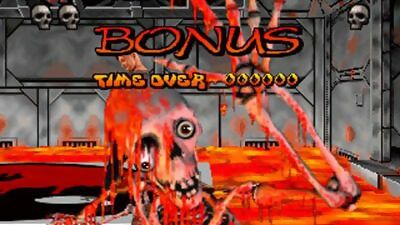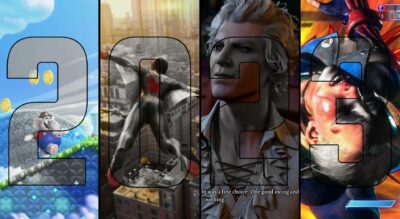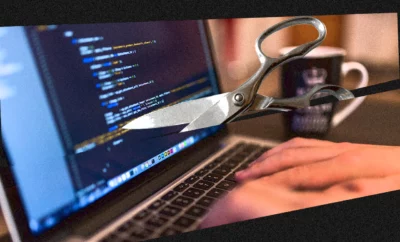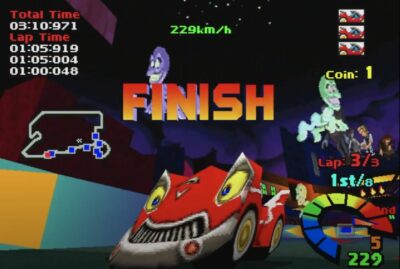
One of the enduring clichés of the video game industry is the compound adjective ‘hit-driven’. Usually used to describe itself, it’s the idea that most commercial games follow an inextricable pattern: a hit game suddenly appears in the mind of the Genius Designer, emerges fully-formed from the sheer power of his brilliance – for it’s always a man – and the money comes rolling in, hand over fist. As with most clichés, there’s at least some dusting of truth on this age-old blueprint. Even today, in an industry that’s larger and more diverse than ever before, we rarely read about modest successes – no, we want to read about the smash hits, the record-breakers.
But over time, as games have become more complex, the titles that truly capture our collective imagination are not the originators of a new idea, but the ones that perfect it – or, alternatively, in today’s increasingly uncertain digital economy, concoct the right monetisation scheme. After all, Playerunknown’s Battlegrounds might’ve sold millions of copies, but it’s the free, ever-evolving Fortnite that every live game is tripping over themselves to emulate.
In gaming’s distant past, the rush to capitalise on a growing trend was even shorter and bumpier than today, but the stories rarely get told, especially if the process failed to produce another blockbuster hit. Consider, then, the crimson flood of violent fighting games that followed the overwhelming arcade success of the original Mortal Kombat in 1992. From the bizarre (and never-released) Tattoo Assassins to Midway’s own subpar 3D fighter War Gods, the next five or so years were marked by bloody B and C-tier fighters that hoped to cash in on the pile of gold that had leaked out of Sub-Zero’s famous ‘spine rip’.
These days, with the advent of lengthy Early Access periods and open betas that precede an official release, it’s not uncommon to see what we might term ‘clones’ emerge on the market at the same time as their inspiration. (For example, Blizzard’s watershed hero-shooter Overwatch came out in May 2016, and the similar free-to-play Paladins followed just a few months later.) For Mortal Kombat, the first imitator came within a month, with Incredible Technologies’ weapon-based fighter Time Killers. According to David Thiel, the sound engineer who worked on the game, Incredible intended Time Killers as their first bold venture into the video game market, and the pressure on the team was very high.

The violent final blows in Time Killers were considered extremely graphic in their day.
Mixed influences
“I think a lot of people think of Time Killers as a Mortal Kombat-kind of thing, which is definitely fair,” Thiel says. “But I think it’s important to remember that in those days, trends moved really fast. [Mortal Kombat] didn’t exist when we started development, we were looking at all the money that Capcom was making with Street Fighter 2 and we thought, ‘Let’s get some of that.’ So we started putting something together, and I think the guys at Midway thought the same thing… I think what people sometimes forget [now] is that those were the days of the arcade, where you had all of two seconds for someone to look at your game and say, ‘Oh, this is its thing.’ You needed a hook. We thought blood was our hook, and clearly, others did too.”
Today, Thiel is best known as one of the devs behind the arcade classic Q*bert, but he describes the year-long development of Time Killers as one of the highlights of his career in games. While the studio had notched several respectable successes in the arcade space in the late eighties with sports fare like Capcom Bowling and Winter Games, Thiel describes Time Killers as their first attempt to compete with larger players in the space. Unlike Mortal Kombat, where the ultra-violent finishing moves could only take place at the end of a match, in Time Killers the fighters could chop off an opponent’s limb at any time, or even behead them with a lucky shot for an instant win.
“When some people saw [the violence], I guess they thought it was upsetting,” Thiel says. “For us, we always thought it was very silly, like a cartoon. You can chop off somebody’s arm and leg, and they’ll keep coming at you. The inspiration for that was the scene in Monty Python and the Holy Grail, with the Black Knight that says, ‘I can fight!’ even though he doesn’t have any limbs left. We wanted it to be funny like that.”

If a competitor lost both their arms, a Time Killers match would end early.
A changing paradigm
For his part, Thiel emphasises that the game came out at a transitional era for coin-op companies like Incredible. While the arcade industry continued to burn for a few more years, once the likes of Mortal Kombat and Street Fighter 2 launched on the consoles of the day, publishers began to realise that there was a lot more money in selling millions of copies of the home version on the Super Nintendo and Sega Mega Drive versus tens of thousands of arcade machines; as such, the resources shifted accordingly. Though Thiel admits that Time Killers came in a distant third compared to the hit fighting games of the day, he pushes back on its reputation as a failed also-ran, which he blames on the disastrous Mega Drive port that didn’t emerge until the mid-nineties, which garnered embarrassing scores from the era’s magazines.
“It made us quite a bit of money,” he says. “We were definitely far behind the big guys, but the pie was so big that even that tiny slice was enough to make a big profit. As [for] the Mega Drive port, I wasn’t involved, but I knew it was going to be a hell of a job. The soundboard in the arcade cabinet had more processing power than the Mega Drive itself. I’d actually never seen the port until recently. I was doing some research on YouTube, and I saw footage of it – it was just brutal. It was like they took my baby from me and just did horrible things to it. I couldn’t watch much of it, to be honest.”
Late in the game
Getting in early on the blood and gore bandwagon might’ve made Incredible Technologies a tidy sum, but the Mortal Kombat clones continued well into the mid-nineties, from unlikely corners of the industry. Just ask Andy Gavin, co-founder of the much-acclaimed Naughty Dog studio. While you’re probably familiar with many of their creations, including Crash Bandicoot, the game that first put the studio on the map, you most likely haven’t heard of the one that preceded their breakthrough, a very strange fighting game that they called Way of the Warrior. Released in 1994 for the ill-fated 3DO – one of several systems that valiantly attempted to bridge the gap between nascent 3D tech and the stalwart 2D of the era – Way of the Warrior is perhaps the most brazen rip-off of Mortal Kombat ever made, complete with regrettable ethnic stereotypes, multiple claymation characters, and loads and loads of fatalities. When asked why Naughty Dog decided to experiment with a kung-fu fighter, Gavin just laughs.

In Way of the Warrior, dreaded Ninja (and fighter Konotori) are both co-developer Jason Rubin in a mask.
“Our first games were radically original, I’d say,” he says. “[Isometric RPG] Rings of Power definitely had some antecedents in Ultima IV-VI, but its interface was very unique, and it has a design vocabulary that was very unusual. However, because EA convinced us to use this weird save-game hardware instead of the battery backup, a lot of retailers wouldn’t take the game, so we ended up selling a fraction of what we would’ve – maybe 400,000. Way of the Warrior was the first game where we looked at the market, looked at what was popular, and tried to make that kind of game. We knew that we would make that kind of game for cheap, so even though the game ended up selling only around 100,000 copies, it still made money for [publisher] Universal, which is a big part of what enabled us to make Crash. It was a transitional game.”
Keeping it cheap
To keep costs down, Gavin and co-founder Jason Rubin worked strictly out of what Gavin calls their “dude apartment”, imitating the technique that Mortal Kombat famously used to digitise and capture its character models from real-life stand-ins. However, since the duo didn’t have the budget to rent a studio space, or to pay their actors, they ended up inviting their friends, acquaintances, and even their girlfriends to clumsily imitate kung-fu moves in front of a curtain in said apartment. (For example, the stick-wielding Australian Shaky Jake is played by Gavin’s own brother.) They didn’t even have room in the tiny apartment to film, however, so they had to open the front door and hang the curtain in the hallway, which drew strange looks from those who also lived in the building.
Their creative process was ramshackle, but organic: when they had a new idea for a character, they simply put Rubin in a ninja mask, so he wouldn’t be recognised as another fighter in the cast. They added unconventional mechanics to the basic fighting system, including ‘magic spells’ that allow savvy players to heal mid-fight, as well as a secret, unauthorised copy of the pioneering space combat game Spacewar!, hidden behind a code. According to Gavin, the two of them voluntarily worked brutal hours that were typical for the era.

Way of the Warrior’s claymation characters were impressive in their day, but they’ve aged quite poorly.
“We would get up at four in the afternoon after having gone to bed at dawn, work on Way of the Warrior until dawn again, get takeout, or go to a Costco-type place to load up on candy, then do it all over again,” Gavin says, laughing. “In many ways, that era of Naughty Dog, from five employees to 40, was our apartment on steroids. It was just, ‘Live and breathe video games, never do anything else.’
I wouldn’t do it the same now, but it worked for us, and I think if you go back and ask anybody who worked during that era, they would say they had a good time doing it… We hardly fired anyone. People self-selected, they quit if it wasn’t for them. By virtue of the people we knew, we were in our early-to-mid twenties, this similar age bracket, so it worked. I recently did some consulting for a small game, it’s a little more PC these days, and they have more best-practices. But the basic feel of ‘game people’ is still there. Sitting in a room, getting it done.”
All-in-all, it’s clear that most aspects of games production have changed dramatically over the years, even when it comes to cranking out what some might call ‘rip-offs’ of bigger games, most of which are mostly forgotten as time passes. But even as the market has shifted, there’ll always be room for imitators. And who knows? Every now and then, they might strike gold themselves.
Other Klones
The nineties saw a far greater wave of Kombat-likes than we could possibly cover here. Bio F.R.E.A.K.S., planned for arcades but made for home systems like the N64, cheerfully cribbed MK’s deadly finishing moves. Others, like Primal Rage and ClayFighter, used similar digitising techniques to bring their characters to life. And then there was Thrill Kill, whose attempts to recreate Mortal Kombat’s controversy (kontroversy?) spectacularly backfired: its violence and sheer kinkiness provoked such horror that the game was never officially released.





